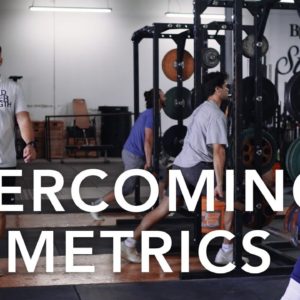The Importance of the Standing Triple Jump
This is a drill that can be used once the initial introductory learning stages have been learned and reinforced. I still use this drill with my more experienced jumpers as an extension of their warm up.
The Approach Run For Long JumpingThis article stresses the importance of a well-constructed approach run. If a long jumper gets this component wrong then the resulting jump will be ruined. The approach run is a complex serial skill and must be treated as such.
Basic Bio-Mechanics For Long JumpingAll jumps coaches should have some understanding of Basic Bio-Mechanical Principles. Also, ALL jumpers should have the same knowledge. It helps in the learning and understanding of the event and will ultimately lead to increase in performance. The following article is a summary of some of the mechanical principles that govern the event of long jumping.
Plyometrics For Long JumpingPlyometrics is high-velocity resistance training characterized by a rapid eccentric contraction followed immediately by a rapid reversal of movement with a concentric contraction of the same muscle. Its main purpose is to heighten the excitability of the nervous system for improved reactive ability of the neuromuscular system.
The Great Discus Throw Debate – Fixed Foot Or Active Release?Two distinct discus throw release styles that have sparked debate for many years. Fixed foot throwing where both feet remain on the ground and a jump release where both feet are off the ground.
Style Or Technique, Which One Do You Coach?Style or technique in coaching track and field, which one as coaches do we actually coach and what are the differences? This article looks at the difference between these two terms and their application for the track and field coach.
General Prep Phase Workouts For Shot and Disc ThrowersIn this article I want to cover a couple of the workouts we do with our crew during the general preparation phase of training. These workouts are great to get the athletes working and back into shape. They come from various sources and are always evolving, feel free to take them and put your own spin on them.
College Track Recruiting – Beating Your CompetitionAre you looking to break into the world of college track recruiting? If so, this article can help you get a clear advantage over your competition. As you already know, the competition is tough and you need every advantage you can get.
New Approach to First Week of PracticeThis year I’ve taken a different approach to the first couple weeks of practice. I’ve simplified the technical approach and increased the volume of reps to facilitate more self reflective throwing.
Speed Ladder Training – Acceleration TrainingAcceleration training has been gaining a lot of creditability the past couple of years. Acceleration training can be a great tool for gaining speed and quickness especially when it is incorporated and works with a speed ladder training program. Acceleration training is simple making your legs move faster than they can normally go. In that process the athlete actually builds fast twitch muscles because of the fast movement that the legs are going through. The athlete is also training the brain into thinking the legs can actually move that fast.
Glory Days and Track and Field Stats ConsideredBack in the day we were all more agile, had more endurance, stamina, and those of us who ran track remember when. Not long ago, I was reliving these glory days with an online acquaintance. Remembering the good ole’ days when I was full of piss and vinegar and had the records to prove it.
Coaching Tip – Bring the Crew TogetherIn order to have a successful crew, a coach must foster an environment to that brings the athletes together into a tight knit group. The easiest way to do this is to get everyone in the habit of working hard. This is done by training and conditioning work done after drills and throwing exercises.
